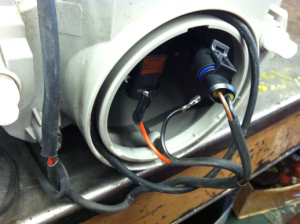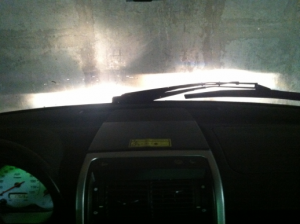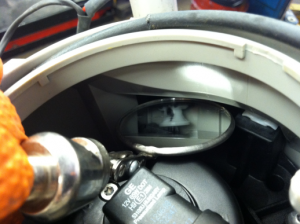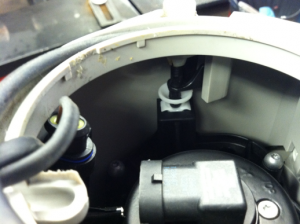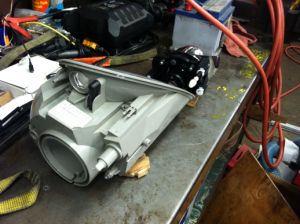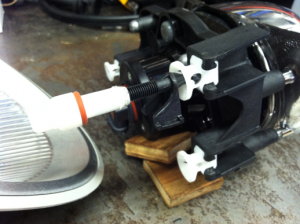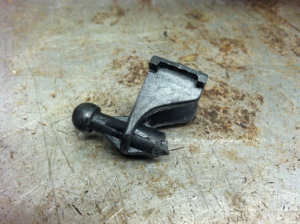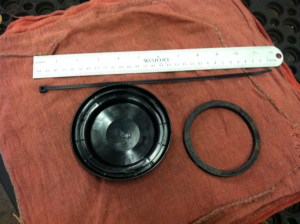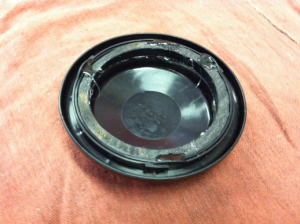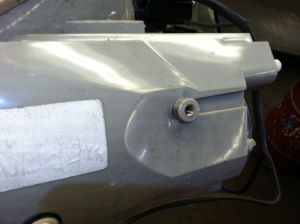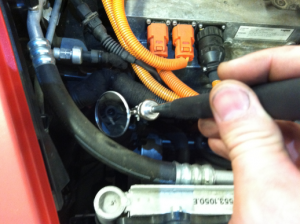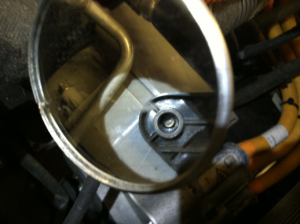There are some issues with Think headlights.
1. Many came from the factory without headlight bulb sockets installed. The headlights are still operational because the actual electric connectors, the sockets that fit onto the pins of the headlight bulb, are installed with electrical tape around one as an unreliable way of preventing a short circuit. We have endeavored to install bulb sockets under warranty to all Thinks that come in to our shop for any reason.
If you find that your headlights have not been retrofitted yet, you are welcome to schedule an appointment to have it done at Hawthorne Auto Clinic or the repair facility of your choice, but I’m afraid we are no longer being paid to perform warranty work, so it will be at the customer’s expense.
We have been using Napa part number 787142, but you are welcome to seek out any bulb socket that fits an H9 headlight bulb.
2. The second major issue with these headlights is that their aim sometimes come out adjustment. Many headlights arrived this way from the factory and sometimes a bump or pothole at high speed will cause the same condition to recur. The usual symptom is that the headlight will point much lower than specified and will be visibly rattling on rough road.
You can see the difference in headlight aim when projected on a wall even just a few feet in front of the car. In the photo below the left headlight vertical ball and socket adjuster is disconnected, so it’s aim is very low:
The headlight bulb and high-beam actuator assembly are mounted inside the large headlight assembly by 3 ball and socket joints. One joint is fixed, and the other two joints move forward and back on screw-type adjusters. One adjusts in the vertical direction, the other in the horizontal direction.
The vertical adjustment ball and socket fitting is under slight constant tension due to the geometry of the design, so it is the one that will most likely disengage. As long as the ball and socket joints are undamaged, the joints can be popped back together by pulling the bulb and high-beam actuator assembly toward the back of the larger headlight assembly with a suitable hook.
Below are some images of a (not quite literally) exploded view of a headlight. The headlight assembly has very limited serviceability. Please do not attempt to take the headlight apart to the extent shown below.
In the beginning when we saw that headlights were pointed much lower than they should be we tried using the adjusters to pull them up; this was before we realized the the ball and socket joints had come apart. The result of over-tightening the adjusters is that the mechanism breaks irreparably (as shown below) and the headlight is scrapped.
3. A third issue with Think headlights is the tendency of the back covers to fall off. I would attribute this to… maybe not poor design– but at least not optimal design. The black circular cover engages the headlight body with 3 small tabs. When the cover is pressed on to the headlight body in the proper orientation and rotated just slightly (maybe about 10 degrees) clockwise it forms a fairly good seal. However, if rotated a little bit too far (and it’s hard to feel if you’ve gone too far) the tabs on the black circular cover bend toward the center and disengage the headlight body. After this happens even once (and I believe it has probably happened to most already), the tabs never stay engaged quite as well as intended.
I’ve designed a quick and dirty solution to this problem. I simply reinforce the inside of the black plastic cover so that the tabs cannot bend inward. The best way I’ve found to do this so far is using 3″ diameter ABS pipe cut into 1/4″ thick rings with an extra shim of zip-tie hot-glued to the inside face of the cover. I’ve already installed this on several cars.
4. A fourth issue with Think headlights is their fit into the fender. There is only one fastener that holds the headlight in place. I suspect that the mating threaded hole insert on the body of the headlight was ultrasonically “welded” in place, but imprecisely so. This can make fully installing the threaded fastener a very laborious job if the mounting hole in the fender does not align with the threaded insert. I use a mirror to check the alignment of the threaded insert to the mounting bracket through which the fastener engages.
